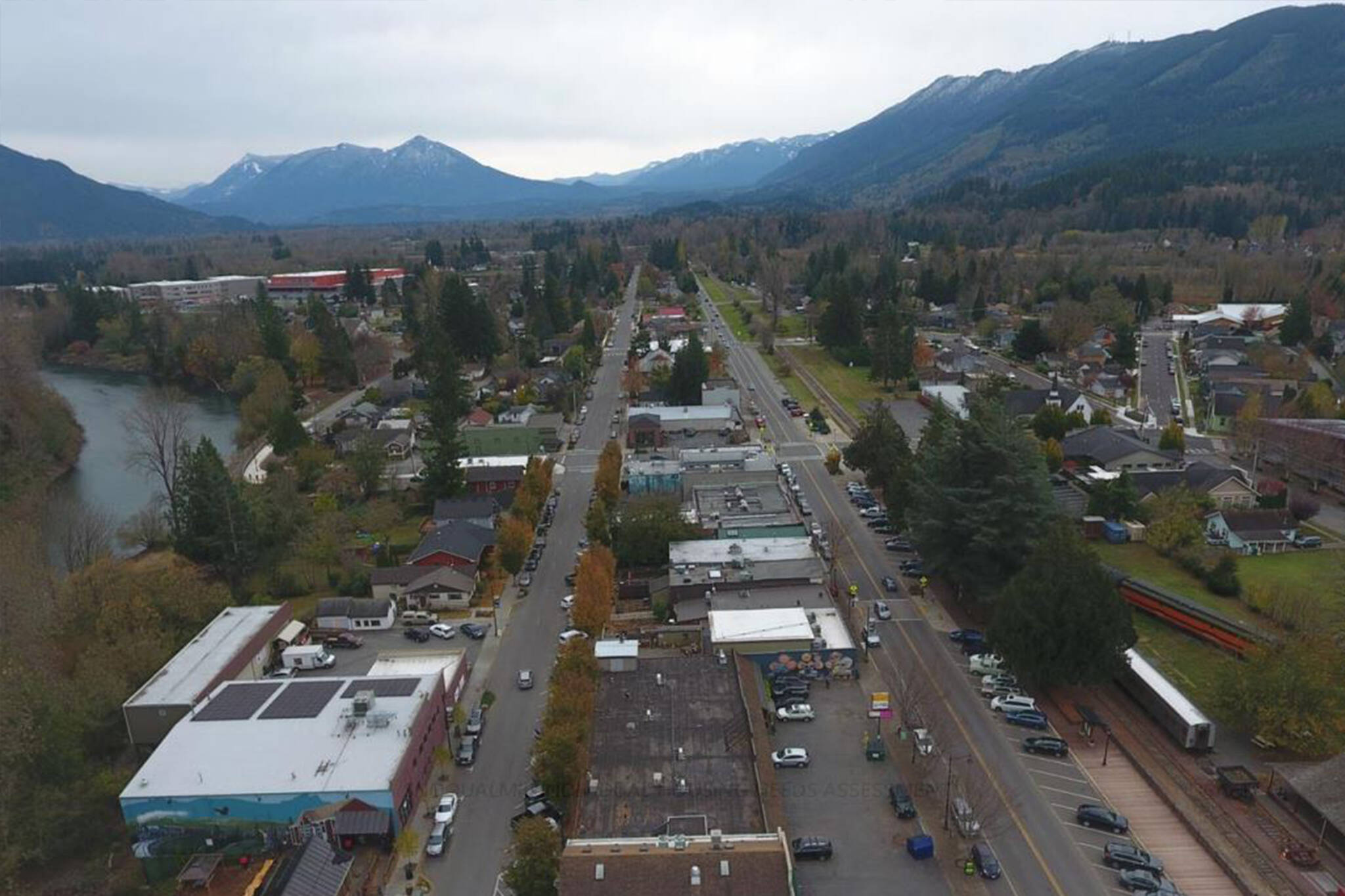The City of Snoqualmie will likely need to annex land beyond its city limits to meet state-mandated housing growth targets over the next two decades, according to the city’s draft housing strategy plan.
Snoqualmie is being asked to accommodate 1,500 new net housing units by 2044, but there is currently a shortfall of land available inside city limits to accommodate that growth. Accounting for projects already in the development pipeline and remaining land capacity, Snoqualmie has a shortfall of close to 400 housing units, according to the plan.
“The big issue the city is facing, just overall with housing, is planning for its housing target,” Matt Covert, a senior planning consultant working on the draft plan, told council members this week. “You don’t have a lot of great options to plan for more housing.”
Housing targets are a requirement under the state’s Growth Management Act, a series of laws first introduced in the 1990s requiring certain parts of the state to periodically plan for future housing needs.
As part of the planning process, city officials and consultants are finalizing the Snoqualmie Housing Strategy Plan, a grant-funded report that outlines ways for the city to meet its future housing needs and growth target. The report follows a housing needs analysis and will be a major component of the city’s 2024 Comprehensive Plan update, a document that will guide city growth for two decades.
Annexation is just one of the strategies being floated as part of the city’s housing strategy. There are also calls for tax exemptions on multi-family housing developments, increased short-term rental options and partnership opportunities.
But while some of those strategies could help close the housing target gap, mitigating the city’s dependence for additional land, the greatest opportunity for new residential capacity lies within expansion to unincorporated areas, according to the draft plan.
Among cities, Snoqualmie is one the most in-need of additional development capacity, Covert told the council.
“With Snoqualmie Ridge and the floodplain, you don’t have a lot of great options to plan for more housing,” he said.
Snoqualmie has been no stranger to annexation. Over the last 33 years, the city has approved two significant expansions. In 1990, the city annexed 1,300 acres to build the Snoqualmie Ridge, and in 2012, the city annexed another 500 acres for the Mill Site Development.
Snoqualmie is mostly built out at this point, but there are a few unincorporated areas within its urban growth boundary (UGA) — a state-designated area where the city can expand — that could be annexed into city limits.
Currently, the largest plot of land available within the UGA is between downtown, Snoqualmie Ridge and I-90, near the Snoqualmie Tribe’s Casino and Reservation. The area, known as Snoqualmie Southwest, was unsuccessfully targeted by developers for annexation back in 2017, according to prior Valley Record reporting. Development plans, which were rejected by the city council, included 800 units of senior-restricted housing.
Beyond Snoqualmie Southwest, there are a few smaller plots east of Snoqualmie Falls and near the Three Forks Natural area. Together, the city has about 98 acres of buildable land available within its annexation area after accounting for critical areas, existing uses and tribal-owned lands, according to the strategy plan.
Still, it is unknown at this point how much housing will actually gets built in the city over the new few decades. State housing targets are more of a planning requirement than a building one. Snoqualmie officials only need to demonstrate to the state that the city could accommodate the 1,500 net housing units inside the city by 2044, if asked.
Elected officials from across the Valley have expressed doubts about the feasibility of the region’s housing targets. Much of their concern comes from recent legislation that altered the Growth Management Act, requiring cities to plan for housing affordable to all income levels. Mayors from Snoqualmie, North Bend, Carnation and Duvall expressed concerns about the requirement in a joint-letter to the State Department of Commerce last November.
“We are making efforts to plan for and accommodate housing affordable to all economic segments,” they wrote. “However, we struggle with the projected needs and growth targets.”
Under the change, Snoqualmie is being asked for over 1,000 of its 1,500 units to be affordable to those making less than the area median income, according to King County’s online housing needs dashboard.
Some Snoqualmie council members have been frank in their skepticism, saying there would need to be a significant outside financial investment and improvements to public services like transit to make those housing targets feasible.
“There are not going to be 1,000 units of affordable housing in Snoqualmie,” Councilmember James Mayhew said. “Not because we don’t want it. Simply because there’s no math behind it – it’s just not going to happen.”



